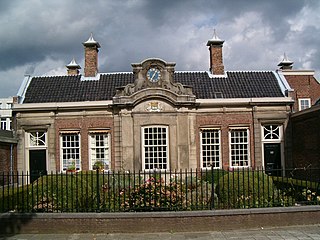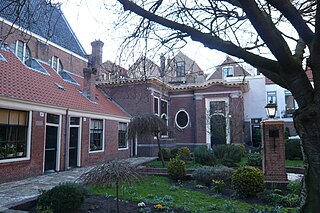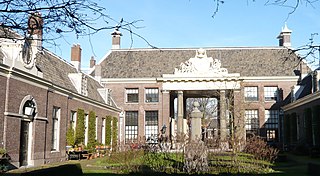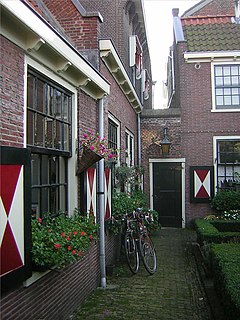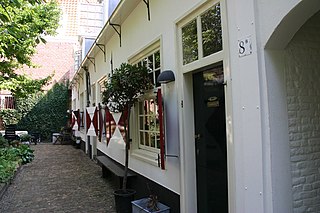
The Remonstrantshofje is a hofje (courtyard surrounded by almshouses) in Haarlem, Netherlands. It is one of the hofjes in Haarlem that is traditionally used to provide housing for elderly people. [1]

A hofje is a Dutch word for a courtyard with almshouses around it. They have existed since the Middle Ages.

Haarlem is a city and municipality in the Netherlands. It is the capital of the province of North Holland and is situated at the northern edge of the Randstad, one of the most populated metropolitan areas in Europe. Haarlem had a population of 159,556 in 2017. It is a 15-minute train ride from Amsterdam, and many residents commute to the country's capital for work.

The Netherlands is a country located mainly in Northwestern Europe. The European portion of the Netherlands consists of twelve separate provinces that border Germany to the east, Belgium to the south, and the North Sea to the northwest, with maritime borders in the North Sea with Belgium, Germany and the United Kingdom. Together with three island territories in the Caribbean Sea—Bonaire, Sint Eustatius and Saba— it forms a constituent country of the Kingdom of the Netherlands. The official language is Dutch, but a secondary official language in the province of Friesland is West Frisian.
It was founded in 1773 by Justus and Isabella van Leeuwarden on the site of the old Ursula cloister. The hofje has places for six women.

Isabella van Leeuwarden was a Dutch Mennonite businesswoman and hofje founder of Haarlem.
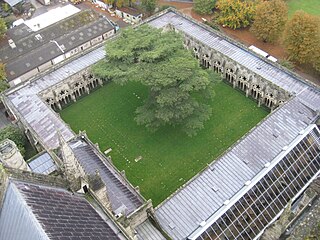
A cloister is a covered walk, open gallery, or open arcade running along the walls of buildings and forming a quadrangle or garth. The attachment of a cloister to a cathedral or church, commonly against a warm southern flank, usually indicates that it is part of a monastic foundation, "forming a continuous and solid architectural barrier... that effectively separates the world of the monks from that of the serfs and workmen, whose lives and works went forward outside and around the cloister."
The entrance of the hofje is in a remaining wall of the old cloister, and the old cloister chapel serves as the entrance hall.

